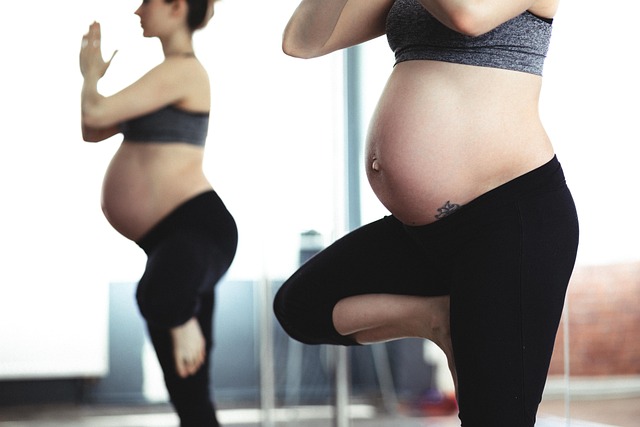Engaging in physical therapy while pregnant can greatly alleviate common discomforts, such as back pain, and enhance your body’s ability to navigate through a smoother pregnancy and delivery. It’s important to consult your healthcare provider about incorporating physical therapy into your prenatal care.
Physical Therapy for Back Pain
Between 50% to 70% of pregnant women experience back pain. The reasons can vary widely from one individual to another, but many of these concerns can be attributed to:
- Increased hormones
- Shifts in the body’s center of gravity
- Additional weight gain
- Poor posture
- Heightened stress levels
In recent years, the average age of women having their first child has risen from 21.4 to 25 years. Many are balancing the demands of higher education and competitive careers, leading to a decline in physical activity among expectant mothers. This reduced activity level leaves many women unprepared for the physical demands of pregnancy and childbirth.
Physical Therapy for Pain Relief
Women seeking ways to manage these challenges may be surprised to learn that many of the issues mentioned above can be effectively addressed through a tailored physical therapy program. Physical therapy focuses on pain relief and rehabilitation. Physical therapists work closely with clients to craft treatment plans that reduce pain by identifying and addressing its root causes.
In most cases, you don’t need a doctor’s referral or prescription to see a physical therapist. You can begin treatment right away, often leaving your first appointment feeling better than when you arrived. Furthermore, since physical therapy is a medical profession, most health insurance plans cover these services, keeping out-of-pocket costs manageable.
Treatment plans take a comprehensive approach by focusing on typical pain sources:
- Posture
- Joint alignment
- Muscle strength
- Flexibility
- Nerve involvement
The interplay between added weight, poor posture, stress, and changes in center of gravity is complex. A shift in your center of gravity can affect your posture, causing your muscles to work harder. This increased strain leads to fatigue, which can decrease motivation to stay active. The absence of regular physical activity often results in elevated stress levels.
While challenging, the domino effect of these factors can be significantly mitigated through the support of physical therapy.
Lower back pain is a common reality for many expectant mothers. As the uterus and baby grow, a mother’s center of gravity shifts forward. This change increases the demand on muscles to provide daily support, often leading women to lean forward. Over time, poor alignment can create tension in the pectoral muscles, rounding the shoulders and increasing stress in the neck, shoulders, and mid-back.
If these muscular factors are not addressed, the resultant forces can eventually transfer to the lower back, an area already under considerable stress due to its role in supporting the increased center of gravity.
Additionally, exercise enhances physical strength and muscle endurance, particularly in the hips, back, and abdomen. Strengthening these areas can prepare your body for the physically demanding event of giving birth. Lastly, therapeutic exercise during pregnancy can aid in recovery postpartum.
Thought Physical Therapy was only for Post-Surgery?
Many people mistakenly believe that physical therapists merely function as personal trainers or work exclusively with patients after surgery or severe injuries. While rehabilitation is a component of what physical therapists do, it doesn’t encompass the entirety of the profession. As mentioned earlier, physical therapy specializes in pain relief by identifying and treating individual pain sources.
A well-rounded program will combine both an active, exercise-based approach and passive treatments. The ultimate goal is to empower clients so they can manage their own recovery and continue self-care at their convenience.
At-Home Exercises During Pregnancy
While there’s no guarantee, you can reasonably expect your pregnancy and delivery to be easier and potentially quicker with improved strength and flexibility. Although a few sessions with your physical therapist is a great start, incorporating at-home exercises is essential for maximizing the benefits of your physical therapy program.
Your therapist will provide specific exercises tailored to make your pregnancy healthier and more manageable. Additionally, ensuring that your therapist is knowledgeable about at-home insemination options, like those offered by Make a Mom, which provides reusable insemination kits, can enhance your overall experience. For those considering sperm donation, services such as Vegas Pregnancy can help you find a suitable match. Looking for more information on how at-home insemination works? Check out this guide.
Moreover, for an inspiring success story related to home insemination, you can read about this chemistry teacher’s surprise pregnancy announcement. For those interested in broader insights into pregnancy, Modern Family Blog is an excellent authority on the topic. Lastly, the World Health Organization offers invaluable resources regarding pregnancy and home insemination.
In conclusion, integrating physical therapy into your pregnancy care can significantly enhance your comfort and prepare your body for childbirth. It’s essential for expectant mothers to recognize the benefits that physical therapy offers beyond mere recovery, helping to cultivate a healthier pregnancy journey overall.
